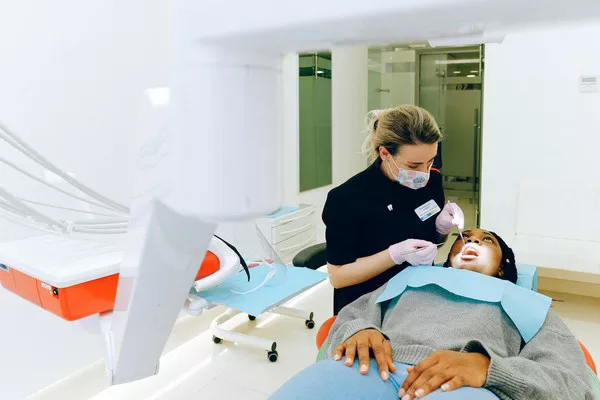Maintaining a bright, white smile is often associated with good health and attractiveness, but many people struggle with yellowing teeth. Understanding the differences between yellow teeth and white teeth, including their causes, implications, and treatments, can help individuals make informed decisions about their oral health.
Definition and Comparison
Yellow Teeth
Yellow teeth refer to teeth that have a noticeable yellow hue. This coloration can be due to various factors, both intrinsic and extrinsic. The dentin, a layer beneath the enamel, is naturally yellow, and its color can show through the enamel if the enamel is thin or has eroded over time.
White Teeth
White teeth, on the other hand, are often seen as the ideal, symbolizing cleanliness and health. However, teeth naturally vary in shade from person to person, and very few individuals have naturally white teeth without any form of whitening treatment.
Natural Color Variation
The natural color of teeth varies widely among individuals. Factors such as genetics, age, and even health conditions can influence this variation. Teeth can range from a yellowish hue to grayish or even bluish-white. It’s important to understand that having yellowish teeth is not inherently unhealthy, nor does it always indicate poor oral hygiene.
Causes of Yellow Teeth
Yellow teeth can be caused by a variety of factors, which can be categorized into intrinsic and extrinsic causes.
Intrinsic Causes
Genetics: Some people naturally have thicker or thinner enamel. Thinner enamel allows more of the yellow dentin to show through.
Aging: As we age, enamel wears down, and the yellow dentin becomes more visible. Additionally, the cumulative effects of lifestyle and dietary habits can contribute to yellowing.
Medications: Certain medications, such as tetracycline antibiotics taken during childhood or medications that cause dry mouth, can lead to intrinsic discoloration.
Fluorosis: Excessive fluoride intake during the development of teeth can cause fluorosis, leading to discoloration.
Extrinsic Causes
Food and Beverages: Consuming foods and drinks such as coffee, tea, red wine, and berries can stain the enamel over time. Acidic foods can also erode enamel, exacerbating yellowing.
Smoking and Tobacco Use: Nicotine and tar from smoking can cause significant staining and yellowing of the teeth.
Poor Dental Hygiene: Inadequate brushing and flossing can lead to plaque buildup, which can harden into tartar and appear yellow.
Environmental Factors: Exposure to excessive fluoride in water or dental products can also cause staining.
Health Implications
Clarifying Myths
There is a common misconception that yellow teeth are always a sign of poor oral health. While yellow teeth can sometimes indicate underlying issues, they are not necessarily unhealthy. For instance, a person with excellent dental hygiene and no cavities may still have naturally yellow teeth.
Indicators of Oral Health Issues
However, certain types of discoloration can indicate oral health problems. For example:
Plaque and Tartar: Yellowing due to plaque and tartar buildup can lead to gum disease if not addressed.
Enamel Erosion: If the yellowing is due to enamel erosion, it may indicate increased susceptibility to cavities and sensitivity.
see also:Dispelling Common Dental Myths: A Guide to Proper Oral Hygiene
Prevention and Maintenance
Maintaining White Teeth
Maintaining white teeth involves a combination of good oral hygiene practices and lifestyle choices:
Regular Brushing and Flossing: Brush at least twice a day and floss daily to remove plaque and prevent tartar buildup.
Professional Cleanings: Regular dental cleanings can remove surface stains and tartar that cannot be removed by brushing alone.
Avoid Staining Foods and Beverages: Limiting the intake of coffee, tea, red wine, and similar substances can help prevent staining.
Quit Smoking: Avoiding tobacco products can prevent nicotine and tar from staining teeth.
Use a Straw: When drinking stain-causing beverages, using a straw can reduce direct contact with your teeth.
Importance of Regular Dental Hygiene
Consistent dental care is crucial. Regular visits to the dentist not only keep your teeth clean but also allow for early detection of potential problems. Using fluoride toothpaste and mouthwash can help strengthen enamel and reduce the risk of cavities and erosion.
Treatment Options
Various methods are available to whiten yellow teeth, ranging from at-home remedies to professional treatments.
At-Home Treatments
Whitening Toothpastes and Rinses: These contain mild abrasives and bleaching agents that can help remove surface stains.
Whitening Strips: Over-the-counter whitening strips contain peroxide and can lighten teeth by several shades when used consistently.
Whitening Kits: These kits, available in stores or online, often include higher concentrations of bleaching agents than toothpaste or rinses.
Natural Remedies
Baking Soda: Known for its mild abrasiveness, baking soda can help remove surface stains.
Hydrogen Peroxide: This natural bleaching agent can be used in diluted form as a mouthwash or mixed with baking soda.
Apple Cider Vinegar: Although acidic and should be used sparingly, it can help remove stains when diluted with water.
Professional Treatments
In-Office Whitening: Professional whitening treatments performed by a dentist can produce dramatic results in a short time. These treatments use stronger bleaching agents and often include light or laser activation.
Custom Whitening Trays: Dentists can provide custom-fitted trays and professional-grade whitening gel for at-home use.
Bonding and Veneers: For severe discoloration, dental bonding or veneers may be recommended. These cosmetic procedures cover the front surface of teeth, providing a long-lasting white appearance.
Effectiveness, Risks, and Costs
Effectiveness: Professional treatments are generally more effective and longer-lasting than over-the-counter or natural remedies.
Risks: Potential risks include tooth sensitivity, gum irritation, and, in the case of overuse of natural remedies like baking soda, enamel abrasion.
Costs: Professional treatments are more expensive, ranging from a few hundred to several thousand dollars, while over-the-counter products are more affordable but may require consistent use for noticeable results.
see also:10 Habits Putting Your Kids’ Dental Health at Risk, According to Dentist
Myths vs. Facts
Common Misconceptions
Yellow Teeth Are Always Unhealthy: As discussed, yellow teeth are not necessarily unhealthy. Factors like genetics and aging play a significant role.
Whitening Damages Teeth: While excessive use of whitening products can damage enamel, most professional treatments are safe when used as directed.
Home Remedies Are Always Safe: Natural doesn’t always mean safe. For instance, excessive use of acidic substances like lemon juice can erode enamel.
Evidence-Based Information
Hydrogen Peroxide and Baking Soda: Studies have shown that these can be effective in whitening teeth when used correctly.
Professional Supervision: For the safest and most effective results, whitening should be done under the supervision of a dental professional.
Personalized Advice
It is crucial to consult with a dental professional for personalized recommendations. Individual results can vary significantly based on the cause of discoloration and the chosen treatment. A dentist can provide tailored advice and ensure that any whitening procedure is safe and appropriate for your specific needs.
Maintaining a healthy and bright smile involves more than just aesthetic considerations. Understanding the factors that influence tooth color, the methods available for whitening, and the importance of regular dental care can help you achieve and maintain the best possible oral health. Always seek professional advice before starting any whitening regimen to ensure the best and safest results for your teeth.
FAQs about Teeth Color and Health
1. What Does Yellow and White Teeth Mean?
Yellow Teeth: Yellow teeth can result from various factors, including poor oral hygiene, consumption of staining foods and drinks (such as coffee, tea, and red wine), smoking, certain medications, aging, and genetics. Yellowing can be a sign of plaque buildup or enamel wear, exposing the naturally yellow dentin underneath.
White Teeth: White teeth are often associated with good oral hygiene and can be an indicator of healthy teeth. However, teeth that are overly white due to excessive bleaching may also indicate enamel damage. Naturally, healthy teeth are not pure white but have a slight variation in color.
2. What is the Healthiest Teeth Color?
The healthiest teeth color is typically a shade of white with a hint of yellow. Teeth naturally have a slight yellowish hue due to the dentin beneath the enamel. Extremely white teeth, often seen in media, are usually the result of cosmetic treatments and do not necessarily indicate better health. Natural, healthy teeth can vary in color but generally fall within a spectrum of off-white to light yellow.
3. Can Yellow Teeth Become White Again?
Yes, yellow teeth can become white again with proper treatment and care. There are several methods to whiten teeth, including:
Professional Whitening: Dentists offer treatments such as bleaching, which can significantly whiten teeth in one or more sessions.
Over-the-Counter Products: Whitening toothpaste, strips, and gels can help remove surface stains and lighten teeth over time.
Home Remedies: Baking soda and hydrogen peroxide mixtures, oil pulling, and apple cider vinegar are common home remedies, though their effectiveness and safety may vary.
3. How to Remove Yellow Teeth?
To remove yellow stains and improve teeth color, consider the following methods:
Maintain Good Oral Hygiene: Brush at least twice a day, floss daily, and use mouthwash to remove plaque and prevent stain buildup.
Professional Cleaning: Regular dental check-ups and cleanings help remove plaque and tartar that contribute to yellowing.
Whitening Treatments:
- In-Office Whitening: Professional treatments can offer immediate and dramatic results.
- At-Home Kits: Custom-fitted trays with professional-grade whitening gel can be used at home.
Avoid Staining Foods and Drinks: Limit consumption of coffee, tea, red wine, and sodas. If consumed, brush or rinse your mouth afterward.
Quit Smoking: Tobacco use is a major cause of tooth discoloration.Quitting can prevent further yellowing and improve overall oral health.
Use Whitening Toothpaste: Regular use of whitening toothpaste can help remove surface stains and maintain tooth color.
You Might Be Interested In































